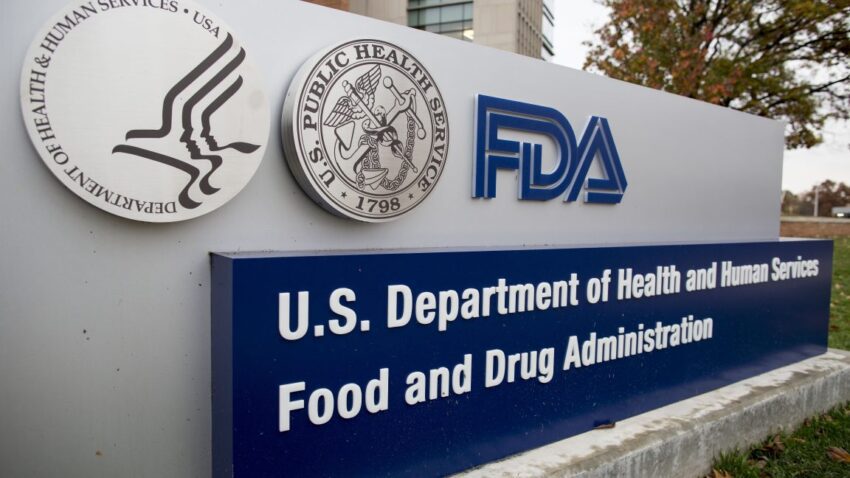
fda slows down on drug reviews approvals The Food and Drug Administration (FDA) is facing significant delays in drug reviews and approvals, a situation exacerbated by the tumultuous environment of the Trump administration.
fda slows down on drug reviews approvals
Overview of the FDA’s Current Challenges
Recent analysis by RBC Capital Markets has highlighted a concerning trend within the FDA, revealing a notable slowdown in the agency’s ability to process drug applications. This slowdown is attributed to a combination of factors, including leadership instability, job cuts, and a chaotic operational environment. The findings suggest that the FDA’s capacity to fulfill its mission of ensuring the safety and efficacy of drugs is being compromised.
Statistical Insights into Drug Approvals
The analysis conducted by RBC Capital Markets examined the FDA’s performance metrics over recent quarters. The results are striking: drug approvals have decreased by 14 percentage points in the third quarter of this year compared to the average of the previous six quarters. Specifically, the approval rate fell from an average of 87 percent to just 73 percent in the most recent quarter. This decline raises questions about the agency’s ability to maintain its rigorous standards while also managing the increased workload that comes with a growing number of drug applications.
In addition to the drop in approval rates, the delay in meeting deadlines for drug application reviews has also increased significantly. The average delay rate rose from 4 percent to 11 percent, indicating that the FDA is struggling to keep pace with its review timelines. This delay could have far-reaching implications for pharmaceutical companies, investors, and, most importantly, patients who rely on timely access to new medications.
Rejection Rates and Manufacturing Concerns
Another alarming trend identified in the analysis is the increase in the rejection rate of drug applications. Historically, the FDA has maintained a rejection rate of around 10 percent. However, in the third quarter, this figure surged to 15 percent. The uptick in rejections is particularly concerning, as it may reflect deeper issues within the FDA’s operational processes.
Manufacturing Plant Issues
A significant portion of the recent rejections has been linked to problems at manufacturing plants. These issues suggest that the FDA’s inspection and auditing processes may be encountering challenges that hinder their ability to ensure compliance with safety and quality standards. The connection between manufacturing problems and increased rejection rates raises questions about the overall integrity of the drug approval process.
Manufacturing quality is critical in the pharmaceutical industry, as it directly impacts the safety and efficacy of drugs. If the FDA is rejecting more applications due to manufacturing concerns, it may indicate that the agency is becoming more stringent in its evaluations. This shift could be a response to previous scandals involving drug safety and efficacy, but it also highlights the need for robust manufacturing practices within the industry.
Implications for Stakeholders
The slowdown in drug approvals and the increase in rejection rates have significant implications for various stakeholders, including pharmaceutical companies, healthcare providers, and patients. For pharmaceutical companies, delays in drug approvals can lead to substantial financial losses. The longer a drug remains in the approval pipeline, the longer companies must wait to recoup their investments in research and development.
Impact on Pharmaceutical Companies
Pharmaceutical companies often invest millions, if not billions, of dollars into developing new drugs. A delay in approval can mean that these companies miss critical market opportunities, especially in competitive therapeutic areas. Additionally, the uncertainty surrounding the approval process can deter investment in new drug development, potentially stifling innovation in the industry.
Moreover, the increase in rejection rates may lead companies to reassess their strategies for submitting applications. They may need to allocate more resources toward ensuring compliance with FDA standards, which could further strain their operational capacities.
Consequences for Healthcare Providers and Patients
Healthcare providers and patients are also affected by the slowdown in drug approvals. Delays in bringing new medications to market can limit treatment options for patients suffering from various conditions. For instance, patients with chronic illnesses or life-threatening diseases often rely on new therapies to manage their conditions effectively. A slowdown in approvals could result in prolonged suffering and, in some cases, could be life-threatening.
Furthermore, healthcare providers may find themselves in a difficult position when it comes to prescribing medications. If new treatments are delayed, providers may have to rely on older, less effective therapies, which can impact patient outcomes. This situation underscores the importance of timely drug approvals in ensuring that patients have access to the best available treatments.
Contextualizing the FDA’s Operational Environment
The current challenges facing the FDA cannot be viewed in isolation. They are part of a broader context characterized by the Trump administration’s approach to regulatory oversight. The administration’s focus on deregulation and job cuts has created an environment of uncertainty within federal agencies, including the FDA. This atmosphere has likely contributed to the leadership instability and operational chaos that the agency is currently experiencing.
Leadership Instability
Leadership changes within the FDA have been frequent during the Trump administration, leading to a lack of continuity in decision-making and policy implementation. This instability can hinder the agency’s ability to respond effectively to emerging public health challenges and to maintain its commitment to rigorous drug evaluation processes. The departure of experienced leaders may also result in a loss of institutional knowledge, further complicating the FDA’s operations.
Job Cuts and Resource Constraints
Job cuts within the FDA have also raised concerns about the agency’s capacity to manage its workload. As the number of drug applications continues to rise, the FDA must ensure that it has sufficient resources to conduct thorough reviews. Resource constraints can lead to increased delays and a decline in the quality of evaluations, ultimately impacting public health.
Future Considerations
Looking ahead, the FDA faces significant challenges as it navigates the complexities of drug approvals in a changing political and operational landscape. The agency must find ways to address the current slowdown while maintaining its commitment to ensuring the safety and efficacy of drugs. This may involve reassessing its internal processes, investing in additional resources, and fostering a culture of transparency and accountability.
Potential Reforms
One potential avenue for reform could involve streamlining the drug approval process. By identifying bottlenecks and inefficiencies, the FDA may be able to reduce delays and improve its overall performance. Additionally, enhancing collaboration with pharmaceutical companies could lead to more effective communication and a better understanding of the agency’s expectations for drug submissions.
Moreover, the FDA may need to prioritize its inspection and auditing processes to address the manufacturing concerns that have contributed to increased rejection rates. Strengthening these processes could help ensure that drugs meet the necessary safety and quality standards, ultimately benefiting patients and healthcare providers alike.
Conclusion
The slowdown in drug reviews and approvals at the FDA is a multifaceted issue that reflects broader challenges within the agency and the political environment in which it operates. As the FDA grapples with leadership instability, job cuts, and increased rejection rates, it must take proactive steps to address these challenges. The implications for pharmaceutical companies, healthcare providers, and patients are significant, underscoring the importance of timely access to safe and effective medications. Moving forward, the FDA must navigate these complexities while remaining committed to its core mission of protecting public health.
Source: Original report
Was this helpful?
Last Modified: October 22, 2025 at 3:36 am
3 views















